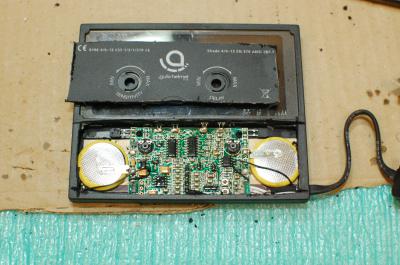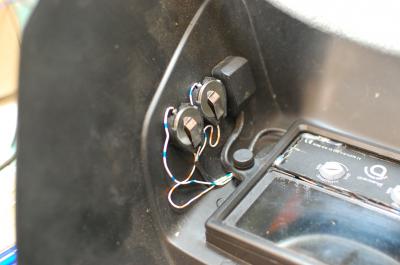Repairing a 'dead' SWP 3041 welding helmet
I bought an SWP 3041 auto-darkening welding helmet on the grounds that it was supposedly powered by the light of the welding arc and didn't need replacement batteries. For the first couple of years it worked well, but then after a break I picked it up and it wasn't darkening any more. I left it out in bright sunlight which seemed to revive it briefly but then it just stopped altogether. It was out of warranty and, somewhat annoyed, I bought a different (battery powered) one from R-Tech Welding (who have excellent customer service).
Idly browsing various welding sites I then discovered that the supposedly battery-free helmets actually tend to have non-replaceable batteries inside them and when those run down, you are expected to replace the entire helmet, or at least the internal cartridge. To say the least I was unimpressed. A bit more browsing and I discovered this item on instructables.com about how to revive a non-working helmet. Borrowing from the instructions, I did something similar with mine.
The cartridge with the electronics and the auto-darkening screen in my helmet is marked 0196 4/9-13 css 1/3/1/379 ce. I cut that open using a Dremel-like tool with a cutting disk in it. If you do the same, I STRONGLY recommend turning both of the sensitivity and delay controls either fully clockwise or counter-clockwise first, making a note of which direction you had turned them, and then just pulling them out as they are a press fit.
Having carefully cut around the front panel, you can lift it out and expose the electronics and the two built-in 3V lithium cells - which are the extremely obvious round obects with yellow edges in this photo. The side up is the negative side of the batteries. Make a careful sketch of the way the batteries are connected so you know where the negative and positive connections go, then with a fine-tipped soldering iron you can remove them.

I then soldered four wires to the terminals where the batteries used to go and cut a channel in the cartridge and its retaining clamp so they could be led out. A hot-glue gun fixed the excised panel back in and the control knobs were pushed back in to their previous positions. More hot glue fixed two CR2032 battery holders (soldered observing the right polarities) to the inside of the helmet and the whole thing was reassembled. It's now working perfectly again and when the batteries run down, they are cheap and easy to replace. Two pairs of AAA batteries would also work in appropriate holders but take up more space - CR2032 batteries are 3V each.

